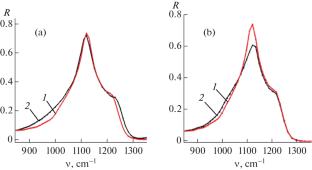机械化学和离子抛光在二氧化硅玻璃表面形成的表面层的研究
IF 0.8
4区 物理与天体物理
Q4 OPTICS
引用次数: 0
摘要
研究了抛光过程中二氧化硅玻璃表面形成的一层光学参数。结果表明,机械化学抛光和离子抛光形成表面层的机理有许多共同之处。在这两种情况下,折射率高于本体玻璃的表面层的出现与玻璃抛光过程中由于水解导致Si-O-Si桥键的拉伸和断裂有关。随着Si-O和Si-OH基团的形成,Si-O - si键发生水解,导致表面层折射率增加。本文章由计算机程序翻译,如有差异,请以英文原文为准。

Investigation of a Surface Layer Formed on Silica Glass as a Result of Mechanical-Chemical and Ionic Polishing
Optical parameters of a surface layer formed on silica glass in the process of polishing are studied. It is shown that the mechanisms of surface layer formation by mechanical-chemical and ionic polishing have much in common. In both cases, the appearance of a surface layer with a refractive index higher than that of the bulk glass is related to stretching and breaking of Si–O–Si bridging bonds due to hydrolysis during glass polishing. The hydrolysis of Si–O–Si bonds occurs with formation of Si–O and Si–OH groups, which leads to an increase in the refractive index of the surface layer.
求助全文
通过发布文献求助,成功后即可免费获取论文全文。
去求助
来源期刊

Optics and Spectroscopy
物理-光谱学
CiteScore
1.60
自引率
0.00%
发文量
55
审稿时长
4.5 months
期刊介绍:
Optics and Spectroscopy (Optika i spektroskopiya), founded in 1956, presents original and review papers in various fields of modern optics and spectroscopy in the entire wavelength range from radio waves to X-rays. Topics covered include problems of theoretical and experimental spectroscopy of atoms, molecules, and condensed state, lasers and the interaction of laser radiation with matter, physical and geometrical optics, holography, and physical principles of optical instrument making.
 求助内容:
求助内容: 应助结果提醒方式:
应助结果提醒方式:


